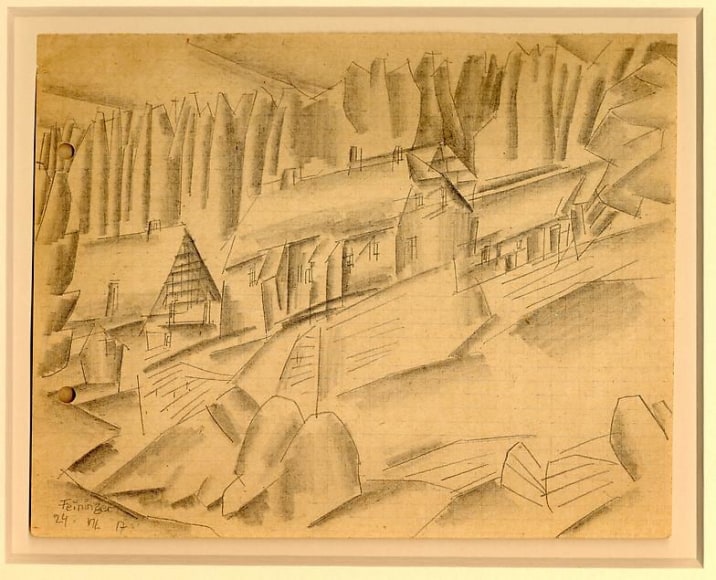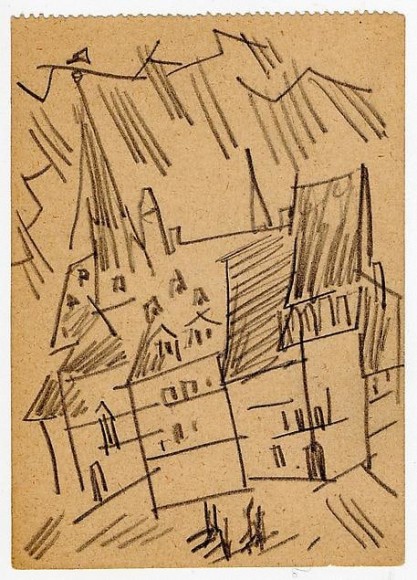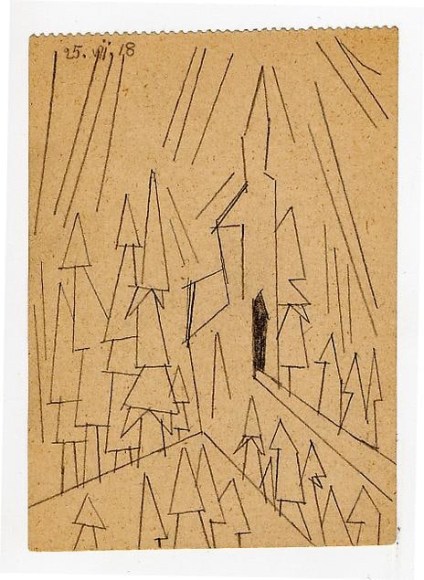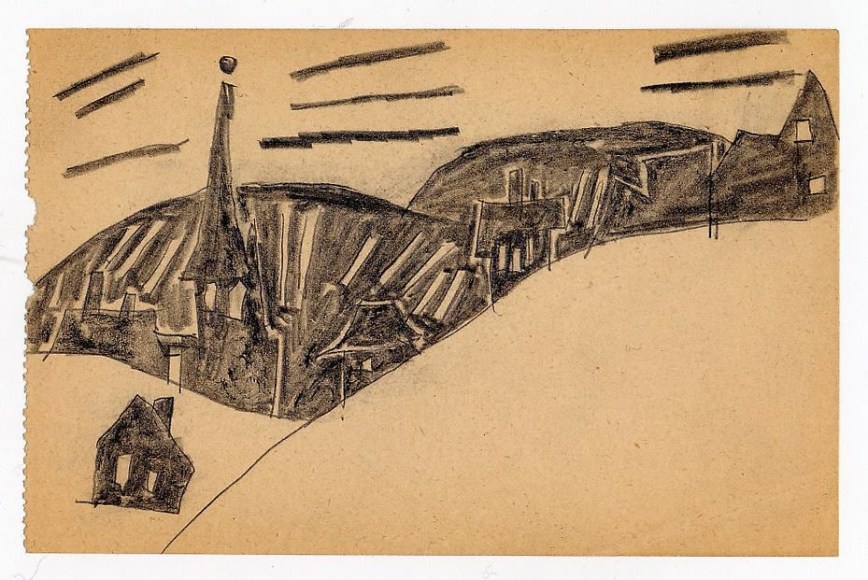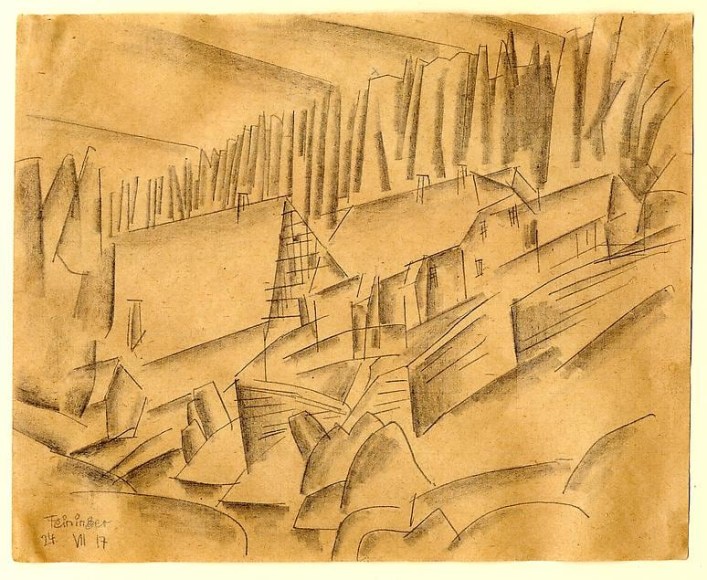Moeller Fine Art Berlin presents "Feininger in the Harz," an exhibition
showing works from the travels of Lyonel Feininger (1871–1956) to Braunlage.
The drawings, more than 75 in number, show the path-breaking inspiration
that his voyages during the summer months of 1917 and 1918 provided for the
artist's work. These unique drawings and the woodcuts based on them, after
having been exhibited at the Lyonel-Feininger-Galerie in Quedlinburg, will
for the first time be on view in this breadth at Moeller Fine Art. The exhibition
will be accompanied by a series of historical documents and information
about the artist that illustrate both the context and the importance of these
journeys in his overall oeuvre.
The works from these two years are striking in their stylistic variety
and expressive power. On the one hand, Feininger captures what he sees
with an almost meticulous precision, on the other hand the motifs serve
as a foundation for transient fugal spatial compositions. Furthermore,
the drawings from 1917 and 1918 impressively document a striking change
in Feininger's artistic expression. While the nature sketches from 1917
show subtle pencil strokes with rich contrasts and cubistic form, the
works from the summer of 1918 exhibit very little nuanced shading, rather
achieving their effect through their powerful two-dimensional quality.
Not coincidental is a strong formal proximity of these drawings to the
medium of the woodcut. Feininger began at the latest by May 1918 with
woodcutting and intended to work in Braunlage "eagerly" with this technique,
new for him at the time. By the end of the year 1918, he had cut a total
of 117 woodblocks that often show motifs from the Harz region.
The scope of the drawings in their radical shift is unique in this density
in Feininger's work. Together with the highly interesting interactions
between woodcut and drawing, the works impressively show the explorations
of the artist in terms of the construction of space. His summer stays in
Braunlage were not only foundational for Feininger's print work, but above
all for his painting.
The Lyonel Feininger Project LLC – New York
Achim Moeller is preparing the 3 volume Catalogue Raisonné of paintings
by Lyonel Feininger. The first volume, covering the period 1907–1918, is
planned for publication in 2011. Publication dates for the second and third
volumes, respectively covering 1919–1936 and 1937–1956, will be announced
shortly thereafter.

